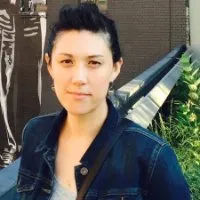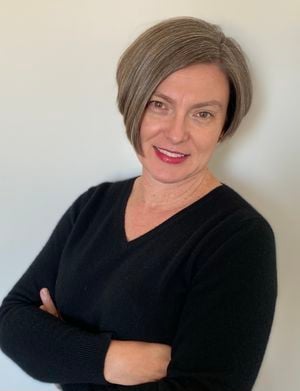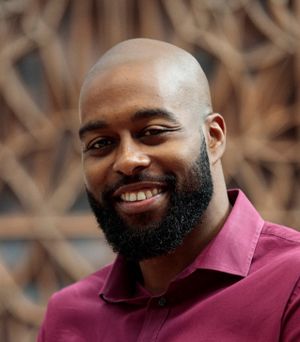Cause and Effect: Stories of Inspiration and Representation in Education
Three Smithsonian educators pinpoint their motivations for careers in museums.
/https://tf-cmsv2-smithsonianmag-media.s3.amazonaws.com/blogging/featured/Chris_2.JPG)
Three Smithsonian educators pinpoint their motivations for careers in museums.
Across the Smithsonian, there are over three hundred educators who support the mission of the “increase and diffusion of knowledge” set forth by the Institution’s founder, James Smithson. Smithsonian educators serve an integral role in the ways teachers, students and lifelong learners connect with our museums, research centers, libraries and zoo. If you’ve ever brought your family to a weekend program at the Smithsonian, experienced for yourself the ways that museum objects can serve as prompts for important conversations, or participated in an online event exposing you to a career pathway you might not have even known existed, it’s likely that a museum educator had a part in making that moment happen.
We spoke with three museum educators about their inspiration for getting into the field, the role of representation in their work and insights into what shapes their practice today.
Did you have any childhood experiences that led to an interest in museums?
Beth Crownover (Associate Director of Education at the National Air and Space Museum): When I was a little girl, I endured a debilitating accident that prevented me from pursuing physical activities for well over a year. It was depressing. When I returned to school, I had to sit on the wall and watch my classmates play at recess. To fill the void, my mother enrolled me in every program possible at the local art museum. I felt embraced by the educators and the museum became my home away from home throughout my childhood.
Those experiences instilled in me an appreciation for how community organizations can impact an individual’s worldview. I wanted to ‘pass it on’ hoping that others would see museums as organizations that can help shape their individual story.
With over twenty years of experience in museums, do you find yourself reimagining traditional programming due to any limitations the pandemic has caused?
Beth Crownover: Traditionally, moments when the ‘switch flips’ happen in the museum and highlight stories that inspire us. The onset of COVID pushed me to consider the pandemic’s impact on museum experiences and how we might create relevant ones in the digital space - especially moments when learners can engage and also see themselves. I have come to realize COVID hasn’t stunted the possibilities, the pivot to digital has expanded the National Air and Space Museum’s capacity to present diverse stories of resilience and perseverance and illustrate how everyone contributes to this dynamic narrative.
Reformatting the Museum’s Family Days is one change in our practice. These programs were seasonal, in-person events that celebrated a specific demographic group, allowing only one dedicated outlet for these stories annually. To increase opportunities to become a part of a family’s routine, these events now take place monthly, with a different content theme each month. This shift allows us to weave stories of diverse innovators and explorers throughout all the digital activities so learners everywhere can imagine their own futures.
Is there a single moment you can pinpoint that set you on a path towards museum education?
Andrea Kim Neighbors (Manager of Education Initiatives for the Smithsonian Asian Pacific American Center): I grew up in racially diverse communities on multiple shores of the Pacific. My formative years were in Japan, where my peers and friends were Asian, Asian American, and mixed-race Asian American, like me. We learned our various cultures (Korean, Filipinx, Japanese) at home with our parents, caregivers, and a community of chosen family. This informal education filled knowledge gaps I didn’t receive in school. Learning outside of school was rich, caring, and created a sense of acceptance. When we moved to a new place in the U.S., I learned I am seen in halves, not whole, which led me to ask new questions about identity that were uncomfortable, yet purposeful.
Years later, I had a life-changing visit to the Wing Luke Museum of the Asian Pacific American Experience in Seattle. I learned about APA histories, and was shocked to see an exhibition about mixed-race Asian Americans. Museums started to have a new meaning for me: they can be places to be whole, and in community.
Are there any projects that you’re currently working on that might inspire others in the same way that exhibition inspired you?
Andrea Kim Neighbors: At the Smithsonian Asian Pacific American Center (APAC), we prioritize our community’s humanity and multiplicities. Our truths are complicated and beautiful. APAC recently launched a video series, “We are not a stereotype: Breaking down APA bias,” with educators who trusted APAC to amplify their voices amidst the dual pandemic of COVID-19 and racial violence, with talks on cross-community solidarity, the damage of stereotypes and racial bias, joy and celebration. I am proud that our work creates space where our communities can be whole.
What impact do you hope to have in your role at the museum?
Christopher Williams (STEM Education Specialist at the National Museum of African American History and Culture): In my role at the museum, I help teachers and students learn that African Americans have always been co-creators of the nation’s future through their STEM contributions. My career in education began through an introspective moment after a STEM outreach experience at a Washington, D.C. elementary school. I realized I may be the only African American scientist the students ever meet in person. While the students may stumble across other scientists or other historical STEM figures, I decided that I wanted to be a force to help make access to information and diverse scientists intentional and a definite reality for the nation’s students.
How do you ensure learners see their STEM potential in the programs you lead?
Christopher Williams: African Americans and other people of color are underrepresented in most STEM professions. By sharing the stories of resilience and victory of African American STEM professionals of the past and today, NMAAHC’s STEM programs allow all to see themselves reflected in the narratives of African American STEM professionals, no matter their background. When students see themselves and their values reflected in African American STEM professionals, it expands their view of what is possible for their futures. It is through knowledge of past and present accomplishments, especially by diverse individuals, that students can orient their footsteps towards future careers in STEM. In my role at NMAAHC, I inform, inspire, and empower teachers and students to see the possibility of how they, too, can be STEM professionals.
To learn more about the ways you can connect with Smithsonian museum educators, the learning resources they provide and a calendar of programs and events they lead, visit the Smithsonian’s Distance Learning website. On a given day no matter where you are, you could explore transformative ideas in art, culture, history, and science with education experts from across the Smithsonian.


